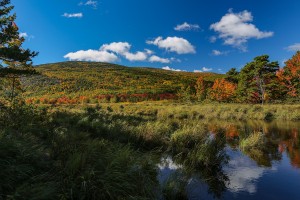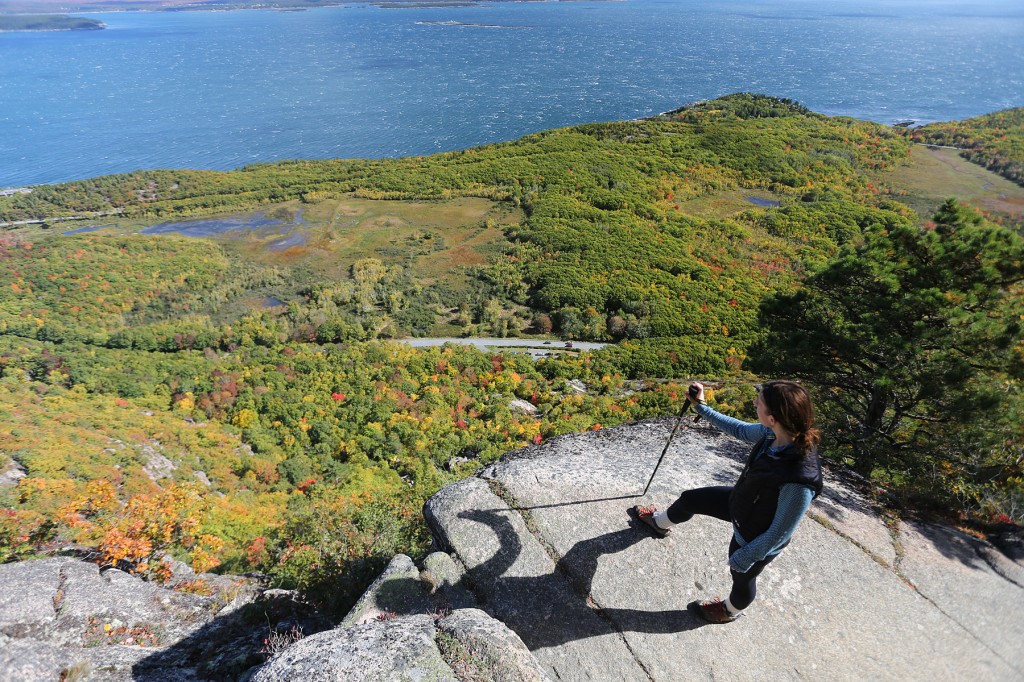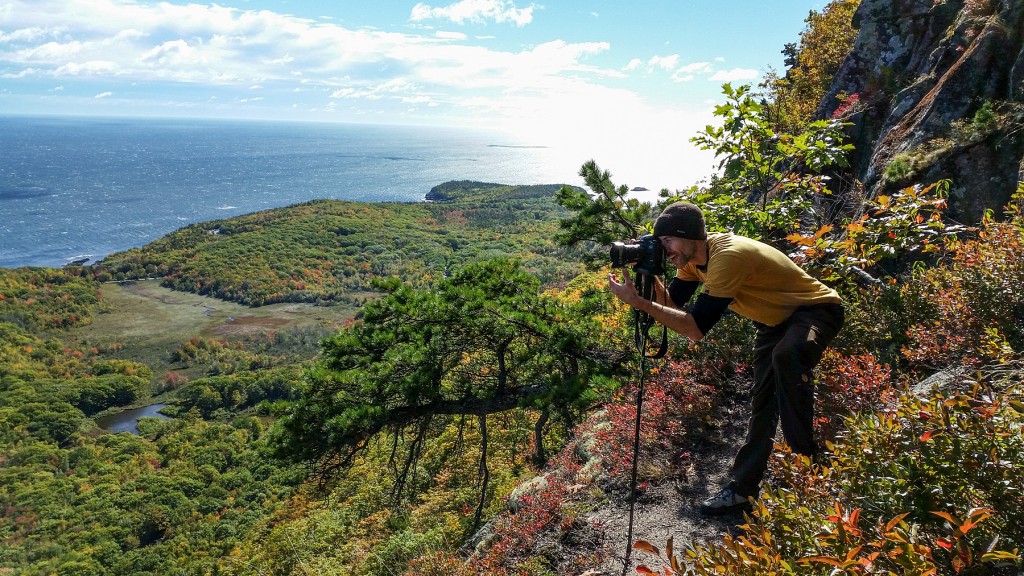Ahh Autumn.
The magical time of year where the sweltering and seductive days of summer yield to fall’s crisp mornings. Leaves scream their silent death throes in dazzling yet dying displays of color, and hordes of Abercrombie-clad couples migrate from the cities clutching pumpkin-spiked beverages to clog highways and peep at leaves.
Insects begin to die off and for a few brief weeks the earth reaches orbital perfection: cooler air, low humidity, late sunsets, and a blanket of color warming the ground on chilly mornings.
After a summer of superlative heat, I cast off northward to hasten fall’s arrival with a trip to the East Coast’s first and likely most popular National Park: Acadia. Within striking distance of Bangor, Acadia reached National Monument status over 100 years ago (NPS in 1929). With over 2 million annual visitors, it i is one of the most popular parks in the country.
Upon arrival, the visitor is cast into the usual National Park experience, complete with toll booths and stopped cars lining the roadsides. Flashers blink in silent cacophonous discord, as a speck of a moose (or what people think is a moose but is actually a deer) ambles in the distance, attracting the aim of a hundred cameras from iphone to 400mm telephoto monsters. Oh well, it still beats a crowded subway.

Acadia sits on Mount Desert Island.
On a map it appears similar to chambered heart. Auto roads intertwine with carriage roads (foot/bicycle travel only), offering easy access to a multitude of destinations from the island’s jagged Atlantic coastline to interior mountains. With a peak altitude of only 1,530 feet, Acadia isn’t exactly Rocky Mountain, but the hiking systems within the park’s boundaries are beautifully crafted by the NPS and well-accessible to novice hikers.
Those wanting a bit more than a casual stroll can set off on a number of Via Ferrata-like trails. The ultimate is a short but steep route called the Precipice, which is arguably the park’s centerpiece for hiking. A stout warning is posted near the start of the trail, and hikers are met with a purposeful bit of mandatory bouldering near the beginning to weed out those not up to the task. Beyond this lies more granite than dirt, steeply-equipped in parts with rungs and ladders to aid the ascent to the top of Champlain Mountain. What it lacks in length it definitely makes up for in vertical feet. The renowned trail climbs up technical terrain, steep enough to have been the site of several fatal falls. It’s not for the faint-of-heart, however, all but the most acrophobic shouldn’t have difficulty if they can pass the first scrambling section.
The first views over the Atlantic begin to hatch about 20 minutes through a talus field, giving rise to the trail proper. It’s more of a scramble from this point on. If you have approach shoes, they’d be worth their weight in gold on this terrain. Who doesn’t relish finding the occasional frozen hiker, cat-on-drapes-style, gripped and over-outfitted on all fours while you stroll casually by in your tennies and jeans? Iron rungs, rails, and ladders begin to appear, notching down the hike to a reasonable 3rd class as you ascend perfect pink granite to the summit.

Precipice Trail
With a vertical gain of over 1000 feet, I figured Precipice Trail would be the perfect testing grounds for the TrekkerFX, all while in hot pursuit of some fall colors to flash for my lens. As a shock-loaded monopod, the TrekkerFX pulled double duty, helping balance through steep talus fields (while carrying camera gear) and served as a monopod with its hidden ¼-20 screw.
On the technical side the TrekkerFX has 3 lockable segments. This means no slipping, which is a huge issue with many hiking poles, especially on descents. Nothing like leaning on your trekking pole while sidestepping a steep ice gully to have the thing collapse as you weight it, sending you ass-over-teakettle into icy oblivion.
From the bottom up, it is handsomely equipped, beginning with the carbide tip and ending with a comfortable EVA handle that hides the camera mount. According to Mountainsmith, the mount holds a maximum load of 3lb, but I had no trouble with my DSLR and 400mm lens, especially when using the tripod collar on the lens mount. Worked for me, but let this here disclaimer dis-indemnify me should you tank your fancy-schmancy camera rig off a cliff.

We set out on a calm and cold morning, but as usual in the northeast, the wind speed climbed as the day grew long. By the time we summited, it was blowing hard enough to stop you mid-step, gusting somewhere near 50-60mph and making walking difficult on the exposed parts of the summit. Again the TrekkerFX stepped up to the plate, helping keep my camera (and me) steady while bagging some peak-top shots in gale winds.
Along with maintaining stability in the elements, the monopod allowed me to hold steady on some longer exposures at the Otter Cliffs, which, although sadly devoid of otters, are pretty much what comes to mind when you think of rugged Atlantic coastline. Mountainsmith was smart enough to include a wrist strap, which isn’t just there to allow the TrekkerFX to function as a fashion accessory at your next ballroom gala. Rather while wrapped around the wrist holding the monopod, the strap allows the user to put a little oppositional pressure on the trekking pole and the camera, increasing stability even further. I was able to drag the shutter down to ¼ second or slower with the monopod braced properly in hand.
Clearly functional in both of its intentions, the TrekkerFX is a great little piece of gear and a pretty stellar value for something most photogs who head off the beaten path will definitely use. Did I mention it can be used to fight off wild dogs?

